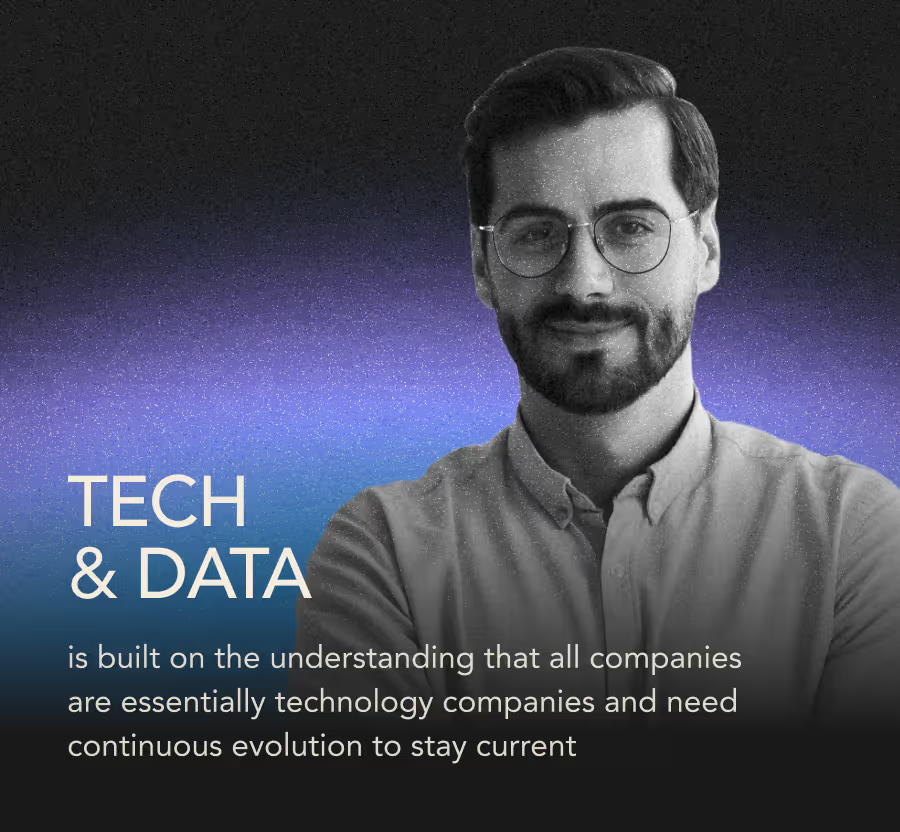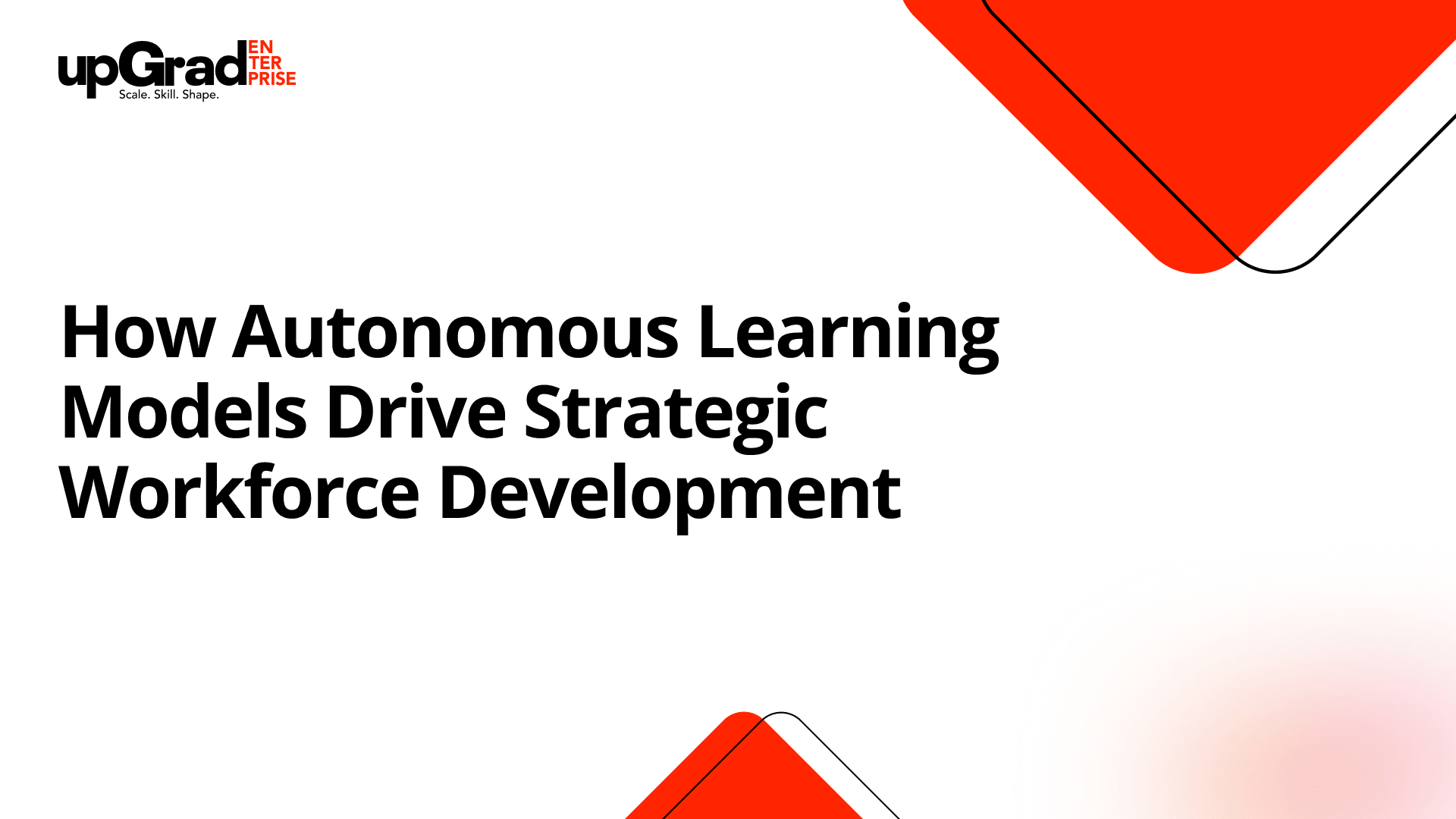Today’s business landscape demands a workforce that can quickly adapt to shifting market conditions and emerging technologies. Traditional training methods no longer suffice to close skills gaps or drive sustained employee engagement.
Autonomous learning models (ALMs) harness artificial intelligence to deliver personalized, scalable, and continuous learning experiences—without heavy manual oversight. These systems enable organizations to strategically develop talent with precision, agility, and measurable impact.
This article provides C-suite leaders and HR executives with a clear understanding of how autonomous learning models transform workforce development, improve organizational performance, and future-proof talent strategies in an increasingly complex business environment. For more insights, visit the upGrad Enterprise.
The role of autonomous learning models in strategic workforce development
Autonomous learning models (ALMs) represent the next evolution in workforce development technology. Powered by artificial intelligence and machine learning, these systems deliver personalized, adaptive learning experiences that require minimal human intervention.
Unlike traditional training programs, ALMs continuously analyze employee performance, skills gaps, and learning preferences to tailor content dynamically. This real-time adaptability ensures that learning remains relevant and aligned with evolving business needs.
Strategically, ALMs enable organizations to:
- Align talent development with business objectives by identifying critical skills and creating targeted learning pathways.
- Accelerate skill acquisition through just-in-time learning and adaptive content delivery.
- Enhance workforce agility by continuously updating training based on market trends and employee data.
By embedding autonomous learning into workforce strategies, businesses can move from reactive training models to proactive talent development—building a future-ready workforce that drives competitive advantage.
Key benefits of autonomous learning models
Implementing autonomous learning models offers measurable advantages that directly impact workforce capability and business outcomes:
Scalability and efficiency
- Automates the delivery of personalized training across large, diverse employee populations without proportional increases in L&D resources.
- Enables rapid deployment of up-to-date content globally, ensuring consistent skill development at scale.
Personalization and engagement
- Uses data-driven insights to create tailored learning journeys aligned with individual career goals and current competencies.
- Increases employee motivation by delivering relevant, bite-sized learning modules when and where they’re needed.
Continuous learning and skill reinforcement
- Supports “learning in the flow of work,” allowing employees to acquire and apply skills in real time.
- Provides ongoing feedback and adapts content based on learner progress, ensuring skill retention and growth.
Cost-effectiveness and ROI
- Reduces reliance on costly instructor-led sessions and external vendors.
- Delivers measurable returns through faster skill acquisition, higher employee retention, and improved productivity.
These benefits position autonomous learning models as essential tools for organizations aiming to maintain a competitive edge through strategic workforce development.
Practical steps for integrating autonomous learning into workforce strategies
Successfully adopting autonomous learning models requires a deliberate approach that aligns technology with organizational goals and culture. Here are key steps for leaders to ensure effective integration:
1. Assess organizational readiness
- Evaluate existing learning infrastructure and data capabilities.
- Identify current skill gaps and workforce development priorities.
- Secure executive sponsorship and cross-functional stakeholder alignment.
2. Select the right autonomous learning technology
- Prioritize platforms with advanced AI, strong analytics, and seamless integration with HR systems.
- Consider user experience to maximize adoption among employees.
- Conduct vendor evaluations including demos, references, and pilot testing.
3. Design personalized learning pathways
- Map critical skills to business objectives and employee roles.
- Develop adaptive content strategies combining ALMs with human coaching where needed.
- Incorporate microlearning and just-in-time modules for flexibility.
4. Implement and roll out in phases
- Start with pilot programs to validate effectiveness and gather feedback.
- Train L&D teams and managers on leveraging ALMs for coaching and performance support.
- Scale deployment progressively based on pilot insights.
5. Measure impact and iterate
- Define KPIs such as skill improvement rates, learner engagement, and business outcomes.
- Leverage analytics dashboards to monitor usage and effectiveness continuously.
- Use data-driven insights to refine learning models and content dynamically.
By following these steps, organizations can seamlessly integrate autonomous learning models into their workforce development strategies, maximizing both employee growth and business value.
Future outlook: Evolving AI trends and workforce demands
As AI technologies advance, autonomous learning models will become increasingly sophisticated and integral to workforce development strategies.
Advances in autonomous learning technology
- Emerging AI capabilities like natural language processing (NLP), predictive analytics, and emotion AI will enhance personalization and learner engagement.
- Integration with broader HR ecosystems—including talent analytics, performance management, and employee experience platforms—will enable holistic workforce optimization.
Shifting workforce demands
- The accelerating pace of technological change drives demand for continuous, lifelong learning and multi-skilled employees.
- Employees will expect personalized, flexible learning experiences that fit their individual career paths and work schedules.
- Organizations must build agile learning ecosystems that can adapt rapidly to market disruptions and evolving skill requirements.
Strategic imperatives for leaders
- Invest in innovative learning technologies that scale and evolve with your workforce needs.
- Foster a culture of continuous learning supported by data-driven insights and leadership commitment.
- Anticipate and prepare for emerging skill demands by leveraging autonomous learning models as a core strategic asset.
By embracing these trends, forward-thinking organizations can future-proof their talent pipelines and maintain a competitive edge in a dynamic business landscape.
Final thoughts
Autonomous learning models are transforming workforce development from a reactive, one-size-fits-all process into a strategic, data-driven engine for growth. By enabling scalable, personalized, and continuous learning, ALMs empower organizations to close skills gaps faster, boost employee engagement, and enhance organizational agility.
For CEOs, CHROs, and other senior leaders, adopting autonomous learning is no longer optional—it’s essential to future-proof your workforce and sustain competitive advantage. Now is the time to evaluate, invest in, and integrate these advanced learning systems to drive measurable business impact and cultivate a resilient, future-ready talent pool.
Take the first step toward strategic workforce innovation by exploring autonomous learning models and positioning your organization at the forefront of workforce development excellence.
Frequently Asked Questions
- What are autonomous learning models?
Autonomous learning models are AI-driven systems that deliver personalized, adaptive training by continuously analyzing learner data and adjusting content without human intervention.
- How do autonomous learning models benefit workforce development?
They enable scalable, personalized learning experiences that close skills gaps faster, increase employee engagement, and improve organizational agility.
- Can autonomous learning models integrate with existing HR systems?
Yes, most modern ALM platforms are designed to seamlessly integrate with HR, talent management, and learning management systems for streamlined workforce development.
What industries can benefit most from autonomous learning models?
ALMs are versatile and effective across industries, including technology, healthcare, finance, and manufacturing, particularly where rapid skill evolution and compliance are critical.









